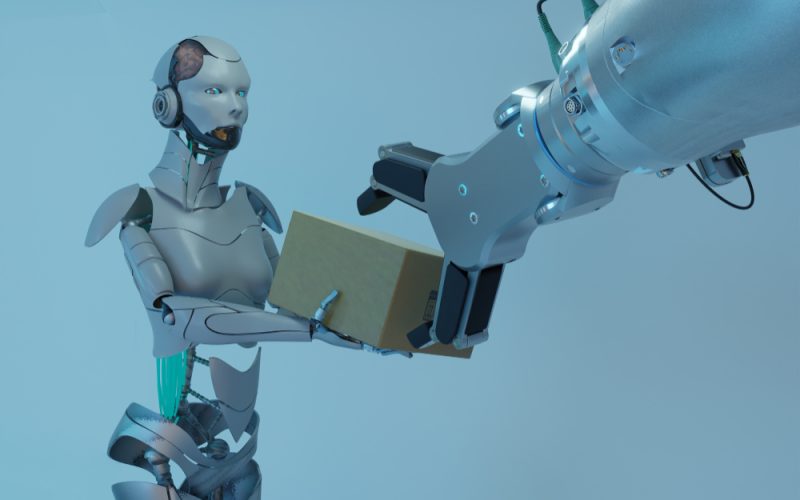Introduction
The US labor market is currently undergoing significant transformations driven by three intersecting trends: two long-term shifts and one cyclical factor. Generative artificial intelligence (AI) is anticipated automate nearly a quarter of jobs across various industries. This shift comes at a time when the workforce is already becoming increasingly “fractionalized,” with part-time roles supplementing or replacing full-time positions. Together, these trends are expected to shape the future of work, particularly how companies recruit and retain talent.
The Driving Forces Behind the Change

1. Generative AI and Job Automation
Generative AI is poised to automate a substantial portion of jobs across different sectors. As of now, around 4% of all US firms have adopted generative AI, but this figure is expected to rise to 7% within the next six months, according to Goldman Sachs Research. Certain industries, such as information services, are likely to lead this rapid adoption, with projections showing an increase in adoption from 16% to 23% during the same period.
2. Workforce Fractionalization
The US labor market has been seeing a shift toward part-time and gig work, which is supplementing or even replacing traditional full-time roles. This fractionalization of the workforce has been on the rise, with companies finding value in a more flexible roster of freelancers, gig workers, and temporary employees. The share of US professionals engaged in freelance work increased from 34% in 2014 to 38% in 2023. Similarly, temporary workers have seen their share rise from 1.06% in January 1990 to 1.74% in March 2024.
3. Cyclical Economic Factors
The third trend is cyclical: the slowdown in the job market. Goldman Sachs Research predicts that US unemployment will rise over the next 12 months. This anticipated rise in unemployment, combined with the ongoing trends of automation and fractionalization, will deeply impact how companies manage their human resources.
How AI Will Transform Staffing and Recruiting
The incorporation of generative AI in staffing and recruiting processes is another powerful force reshaping the labor market. Here are some of the ways AI is making an impact:
Enhancing Job Descriptions and Resumes
Generative AI can be used to create detailed and appealing job descriptions. Additionally, AI tools can format resumes and rank candidates based on their qualifications, making the recruitment process more efficient. According to Goldman Sachs Research analyst George Tong, approximately 52% of talent acquisition leaders consider candidate identification from large applicant pools the most challenging aspect of recruiting. AI can significantly alleviate this challenge.
Screening and Initial Interviews
AI can streamline the initial stages of recruitment by conducting preliminary interviews and screening applicant information. This can save substantial time and reduce the workload for human recruiters, allowing them to focus on more nuanced aspects of the hiring process.
The Rising Labor Churn and its Implications
Labor churn, or the rate at which employees change jobs, has been increasing. Quit rates rose steadily from 2010 to 2019. The COVID-19 pandemic accelerated this trend, with many individuals turning to gig work to supplement their incomes due to unemployment or reduced work hours.
The Gig Economy
The pandemic highlighted the value of a flexible workforce for both workers and companies. As a result, the gig economy expanded substantially, attracting millions of new workers. This shift is likely to continue as more people seek flexible working arrangements and as companies look to optimize their labor costs.
Temporary Staffing Trends
Temporary staffing has traditionally been a precursor to broader economic trends, often leading macroeconomic and labor market shifts by two to four quarters. Currently, temp penetration is in decline, having dipped to 1.74% in March from 1.75% in February, continuing a broader downward trend since March 2022 when it was 2.1%. This decline in temp staffing indicates a cooling labor market, suggesting that companies are beginning to scale back their workforce in anticipation of economic slowdown.
Job Market Projections: Unemployment and Demand-Supply Dynamics

Unemployment and Corporate Downsizing
Goldman Sachs Research foresees an increase in US unemployment over the coming year, accompanied by instances of corporate downsizing and hiring freezes. These factors will likely lead to a softening demand for labor and an increased supply of job seekers.
Sector-wise Impact
Job market trends vary across sectors. On platforms like Indeed, job postings have significantly declined in blue-collar and clerical fields such as construction, manufacturing, and retail. In contrast, white-collar and highly skilled sectors like software development, banking, finance, and marketing have shown signs of stability after sharp declines over the past two years.
The Future of Recruitment and Talent Retention
New Job Categories
Despite the potential for job displacement, generative AI may also create new job categories and roles. Industries that embrace AI will likely generate opportunities in areas that directly or indirectly support AI technologies.
Efficiency in Recruitment
AI’s role in enhancing recruitment efficiency cannot be overstated. By automating repetitive tasks such as resume screening and initial interviews, AI can make the recruitment process faster and more accurate. This enables companies to fill positions more quickly and effectively, thereby reducing the time-to-hire and associated costs.
Flexibility in Employment
The trend towards a more flexible workforce is expected to continue. The rise of freelancing, gig work, and part-time roles offers both workers and companies the flexibility to adapt to changing economic conditions. This flexibility is particularly valuable in a volatile job market, where the ability to quickly scale up or down can provide a competitive edge.
Conclusion
The US labor market is at a pivotal moment, influenced by the intersecting trends of AI-driven automation, increasing workforce fractionalization, and cyclical economic changes. Generative AI stands at the forefront of these transformations, promising to automate a significant portion of jobs while also creating new opportunities. The flexibility of the gig and freelance economy is reshaping traditional employment models, offering new ways for companies to manage talent. As the economic landscape continues to evolve, businesses must adapt their recruitment and retention strategies to navigate these changes successfully.
By leveraging AI and embracing more flexible employment practices, companies can better prepare for the future, ensuring they remain competitive in a rapidly changing market. The key will be to balance automation with human expertise, creating a workforce that is both efficient and adaptable.












